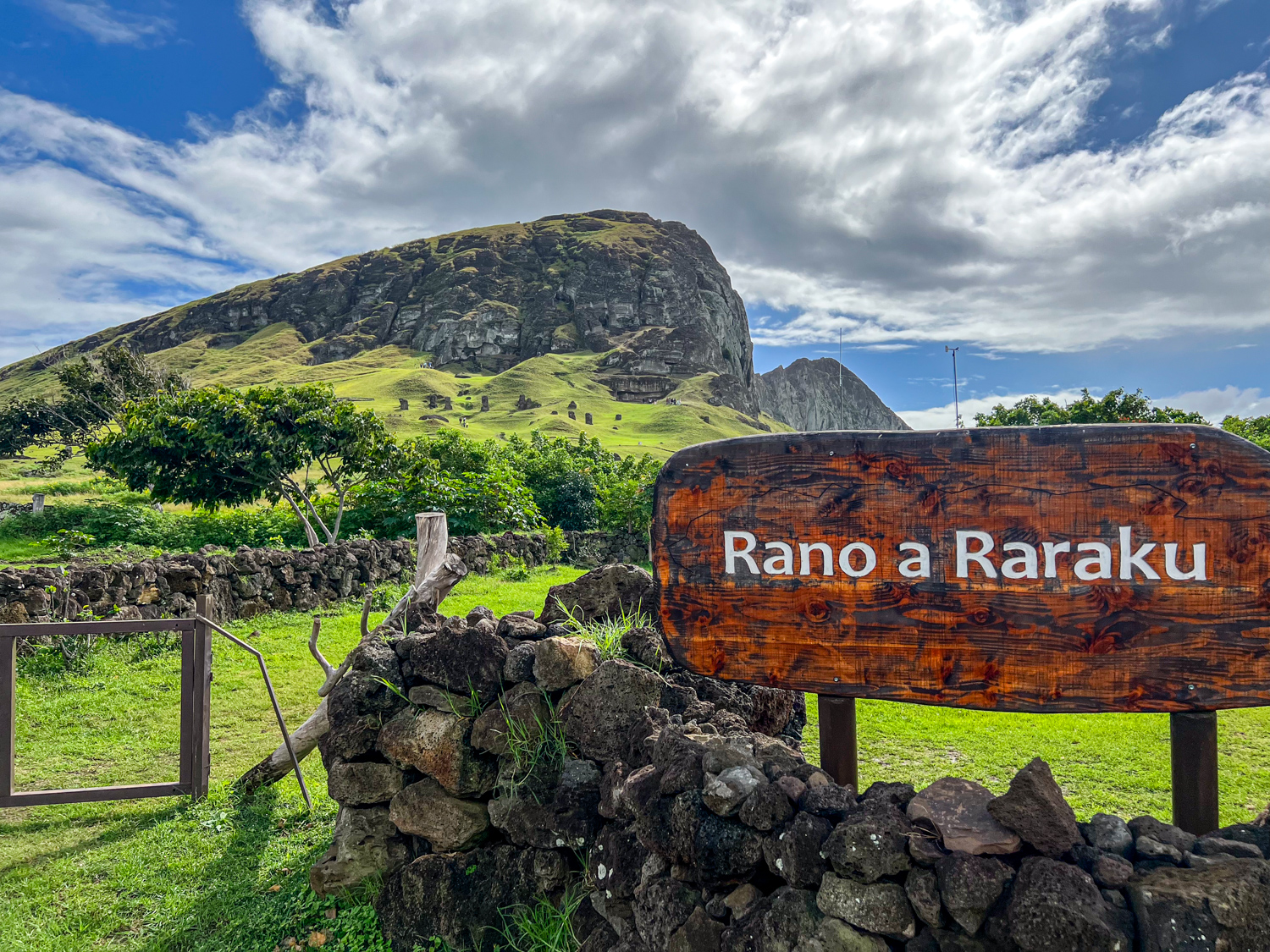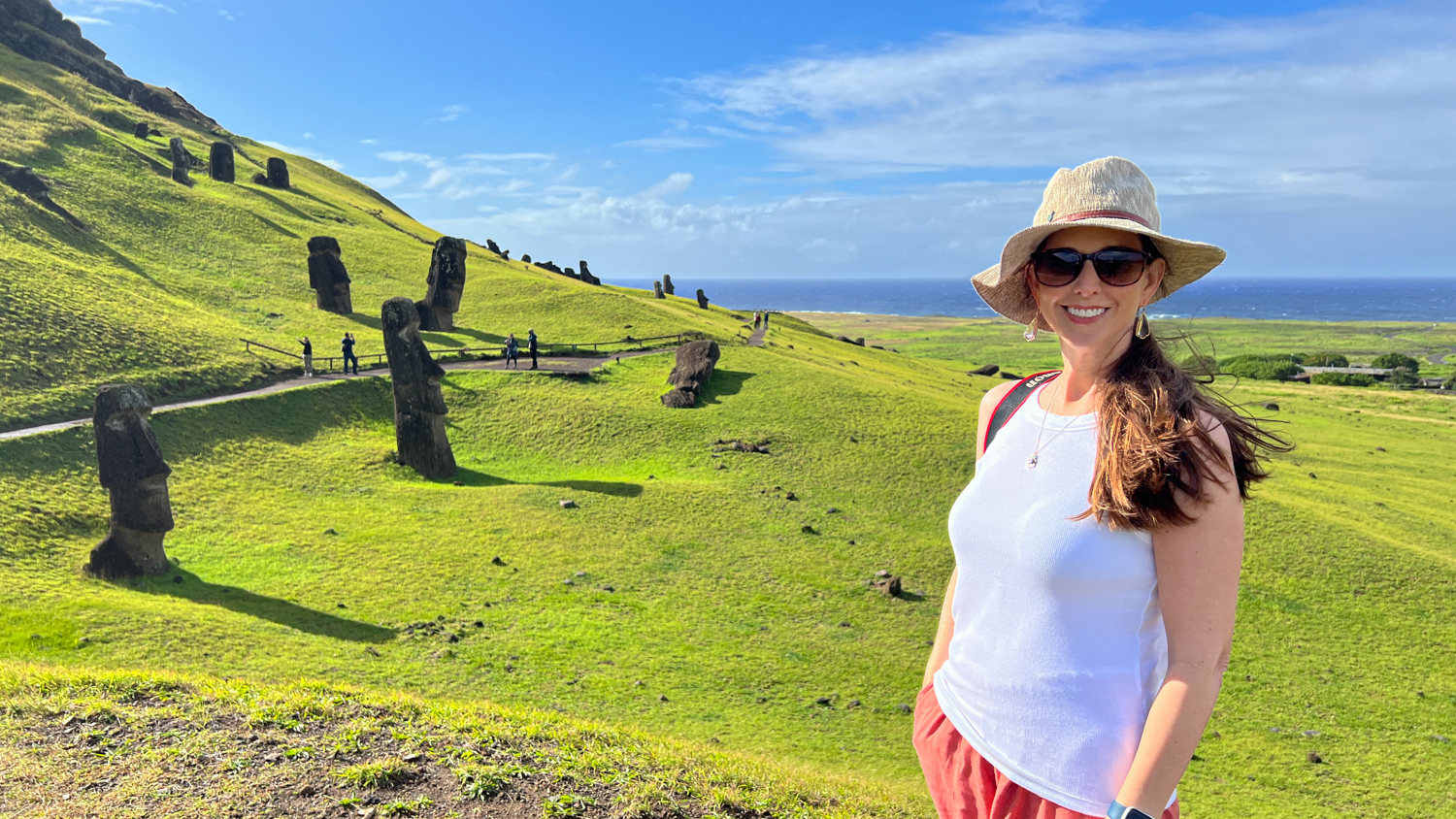Researching which moai statues to visit on Rapa Nui (Easter Island) in Chile can be overwhelming. I speak from experience, having spent many hours planning to make the most of a week on this mystical and remote South Pacific island.
However, the names and places I read about quickly became familiar once Kel and I arrived on Easter Island via the daily LATAM Airlines flight from Santiago. By the end of our week, we’d visited all the major moai sites and many minor ones. Instead of swamping you with every possible moai site on Easter Island in this article, I prefer to focus on the five most impressive and photogenic ones.
If you’re short on time, know you can visit all five incredible archaeological sites in a single (albeit busy) day. However, I recommend giving yourself as many days on the island as possible. Kel and I enjoyed visiting several of these spots multiple times.
Moai Sites
1. Rano Raraku

The most important archaeological site on Rapa Nui is Rano Raraku, a volcano on the island’s eastern side that the Indigenous people used as a quarry. The volcanic crater is made of tuff, a soft volcanic rock ideal for carving. From 1100 to 1500 AD, roughly one thousand moai statues were carved from the crater’s eastern slope. The statues honor ancestors, chiefs, and important figures in Rapa Nui society.
Rano Raraku provided the majority of the moai found on the island, and over 400 statues in various stages of completion are still present at the site. One of the fascinating aspects of touring Rano Raraku is the chance to see moai statues in different stages of construction.
Some unfinished multi-ton statues remain attached to the ground by their backs, as the back was the last part to be carved before the moai were moved. Others stand upright with their head and shoulders above ground while their bodies remain buried in the soil. Several statues were left face-down, possibly because they didn’t meet the builders’ standards or were abandoned before being transported to their intended ahu (ceremonial platform).


Visiting the Quarry
Rano Raraku is part of Rapa Nui National Park, a UNESCO World Heritage Site. Visitors must purchase a ticket, available online through the official Rapa Nui National Park website, for 72,000 Chilean pesos (about $77). Tickets are valid for 10 consecutive days from the start date. Due to the ecological and archaeological sensitivity of this…
Click Here to Read the Full Original Article at GoBackpacking…